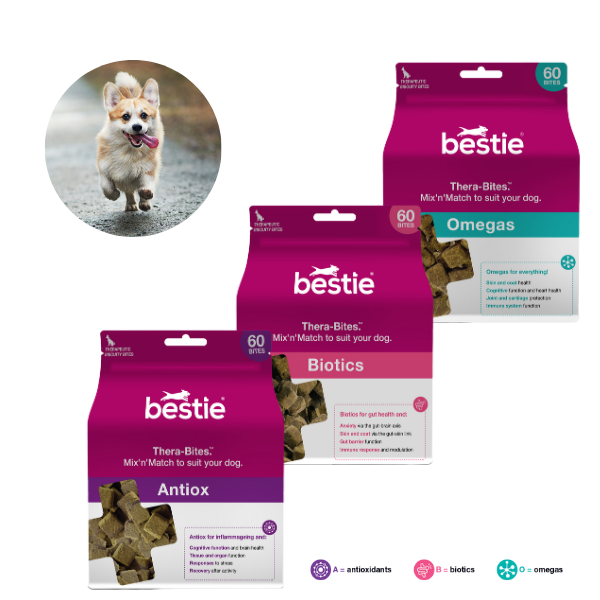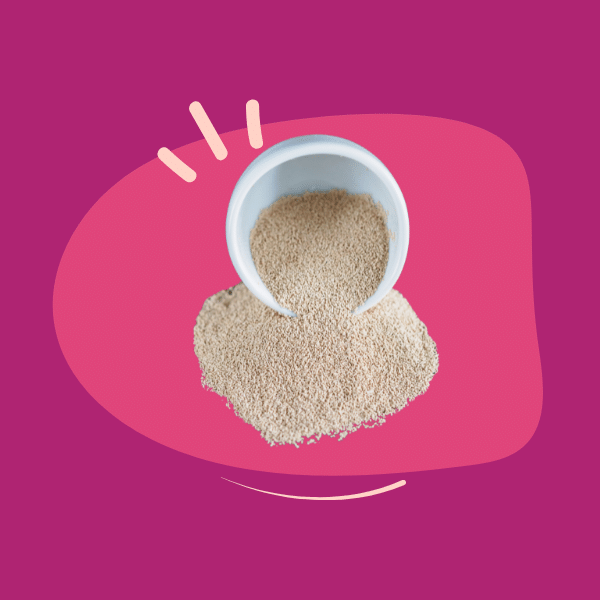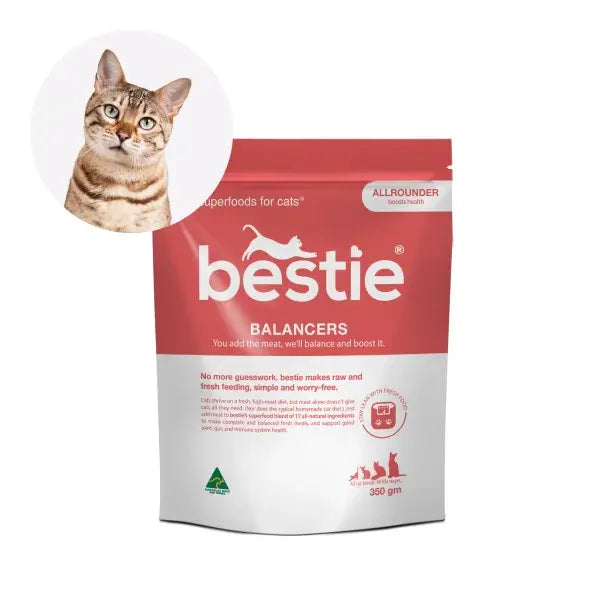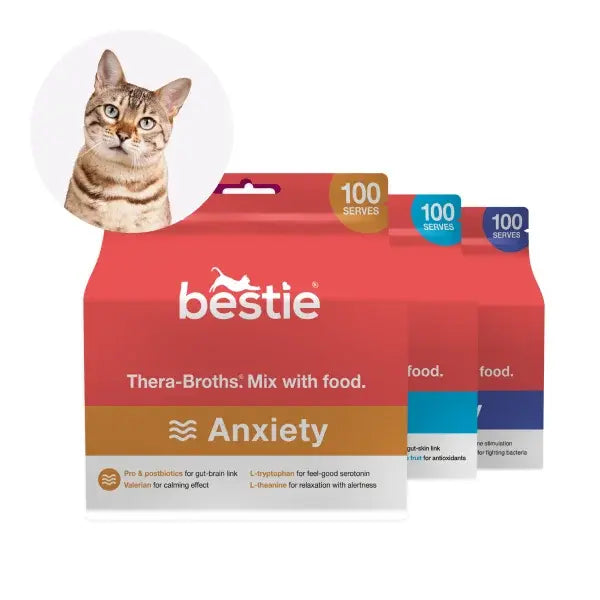In this episode of the Pet Nutrition Show, we dive deep into managing kidney disease in dogs and cats with a focus on nutrition.
We look at the importance of a specialised diet and offer practical advice on suitable treats for dogs with renal problems.
The discussion includes the physiological impacts of kidney disease, the role of nutrition in disease management, and the significance of phosphorus restriction.
Dr. Anna also shares a simple and tasty homemade treat recipe that is kidney-friendly. Tune in for valuable insights to help your pet maintain a healthy life despite kidney disease.
00:00 Welcome to the Pet Nutrition Show
00:46 Q&A: Treats for Dogs with Kidney Disease
02:25 Understanding Kidney Disease in Pets
03:55 Managing Kidney Disease Through Nutrition
09:32 Homemade Diets for Pets with Kidney Disease
12:37 Supplements and Botanicals for Kidney Health
17:36 Home Food Hacks with Dr. Anna
18:34 Conclusion and Next Episode Preview
You can also listen on Spotify or Apple.
Have a listen to the show, but if you’re more of a reader, here's the transcript:
[Automatically generated and not corrected for typos.]
[00:00:00] INTRO: This is the Pet
[00:00:03] AMANDA: Nutrition Show with Amanda and Dr. Anna. Welcome to the Pet Nutrition Show, where we talk everything related to pet nutrition with a sustainability focus. And I'm with co host Dr. Anna Sutton, physiologist, not vet, let me just say, for the third episode of our deep dive into special areas of clinical nutrition.
[00:00:28] AMANDA: And this week we are talking about, well, kidney disease, Anna. And I know we certainly at Bestie get lots of questions from people about what's an appropriate. diet for a dog with a renal problem. So we're going to talk about that in a little bit more detail today. Uh, but first up, let's handle a Q
[00:00:49] INTRO: and A.
[00:00:49] INTRO: Pet Q and A, where we answer what you're wondering about food, moods, and poos.
[00:00:57] AMANDA: Quite simply, What can I give my dog as a [00:01:00] treat if they've got a kidney disease?
[00:01:02] ANNA: It's actually quite, quite challenging that because if you look at all the treats in the market, they're often meat based and that's kind of the worst thing you want to give a kidney patient because, you know, it's high in phosphorus and it's high in protein.
[00:01:14] ANNA: So a good little tip if you've got a kidney patient is, um, well, you know, you know, those vanilla biscuity things. Just a milk biscuits, just small pieces of those or what you mean like a milk arrowroot. Yes, that's the one
[00:01:33] AMANDA: Lucky dogs
[00:01:36] ANNA: Wow, you know worth it aren't they?
[00:01:38] AMANDA: Well, I've got to be I've got to be honest here Anna and when we had the dogs I used to make milk arrowroot with peanut butter for me and for them. So it was one for me one for them. So
[00:01:50] ANNA: There you go. Well, that's the easy one. You can give other things like little pieces of carrots or celery.
[00:01:55] ANNA: You can put some peanut butter on if you want to make it a bit fancy or you can [00:02:00] be a little bit cheap like me and you can just save the crust, put them in the oven, give them those again. I think that was the hack we had on obesity, wasn't it? Exactly. Exactly. That's the hack that keeps on giving. That's right.
[00:02:12] ANNA: Just watch out for excess salt and so forth that can come in through additives or flavors and so forth and just watch out for that protein, but definitely avoid the high meat treats in this case.
[00:02:24] AMANDA: Okay. So let's dig into this in a little bit more detail because you've mentioned a couple of things there about what should be avoided, but first up, what is kidney disease in pets and, and what's the impact of that?
[00:02:36] AMANDA: Oh, You know, in basic term,
[00:02:39] ANNA: what kidney disease is, is it's really the inability of the kidneys to filter waste properly. So what happens is the pet's ability to filter waste from the blood, um, or regulate its electrolytes, that's things like sodium and potassium, maintain its fluid balance. [00:03:00] Um, All starts to go wrong.
[00:03:03] ANNA: And this leads to a buildup of toxins in the body. And this is why in humans, for example, in, in late stage kidney disease, end up having to go on dialysis to remove all that stuff. So, you know, in terms of the, Signs and symptoms if you like, increased thirst is one and that's because the electrolyte balance is off, urination, a lot of urination, loss of appetite, weight loss is a common one, lethargy, and then towards the end or more advanced stages, you might see vomiting, diarrhea, and changes actually in coat quality again, just as we spoke about in the last episode.
[00:03:46] AMANDA: So, what then do you do in terms of, um, managing kidney disease? Can you fix it? Or you just manage it?
[00:03:55] ANNA: Usually, it's a case of managing. And this is where [00:04:00] nutrition actually comes in. into its own here. So really what you're doing with nutrition is you're trying to reduce the workload on the kidneys and help control the symptoms, slowing progression of the disease.
[00:04:13] ANNA: Um, and this is where a special kidney diet can really help manage those accumulation, if you like, or, or manage those waste products and toxins. So, you know, in terms of what the main goal is. For a kidney diet, you're looking to reduce the phosphorus, at least, uh, and that's the primary goal. And, um, at later stages, reduce the protein intake.
[00:04:40] ANNA: And it depends sort of where along the path, the kidney path that pet is. You've also got to control blood pressure, maintain the right electrolyte balance, and ensure there's adequate hydration as well. Um, and manage the inflammation. So if you can do all of [00:05:00] these, that really helps extend the life of your pet.
[00:05:04] AMANDA: So let's just deal with one of those in a bit more detail because you mentioned that that one of the key things you're going to do is to reduce phosphorus. So why? Yeah,
[00:05:15] ANNA: so this is a really important. So, um, When a pet has kidney disease, it impairs their ability or it, it stops them being able to excrete phosphorus, uh, well enough.
[00:05:30] ANNA: And what that ends up is, is leading to an elevated level in the blood, and that's called hyperphosphatemia. And. When you get these high levels, that's actually what, what causes the problem. So when you get these levels, they can trigger a secondary disease like hyperparathyroidism, um, which basically stimulates the parathyroid glands to produce more parathyroid hormone.
[00:05:59] ANNA: And [00:06:00] this releases calcium from the bones to balance those high phosphorus levels. which ends up weakening the bones and causes like lots of different things. You can see reduced soft tissue. You can get these mineralizations. So the excessive phosphorus in the blood can combine with calcium and that can lead to formation of these calcium phosphate crystals that can deposit in soft tissues, including the kidneys for that matter, blood vessels, heart, and these can cause damage and complications.
[00:06:30] ANNA: And in general, The high PhOS levels, and there's quite a lot of data on this, generally associated with much faster progression of the disease. So whatever we can do to, to reduce PhOS in, in the diet, and it does depend on where, on what sort of PhOS levels that pet has been having previously, can really help preserve, you know, what, what's left of their kidney function and really improve their quality of life.
[00:06:58] AMANDA: So, in addition to [00:07:00] the problems that arise specifically from phosphorus levels being too high, there are some other negative health impacts that are just a result of the kidney disease itself, right? Like immune system suppression, for example.
[00:07:12] ANNA: Oh, yeah, absolutely. So lots of other things happen with kidney disease.
[00:07:17] ANNA: So you get imbalances in nutrients and that can, for example, uh, impact your skin. your skin and coat health. You see a lot of protein loss. So pets with kidney disease often lose protein through their urine. So you'll see muscle loss and also changes in the hair, skin and coat quality. You can get toxin accumulation.
[00:07:41] ANNA: that, uh, again, can impact skin and coat health. And then kidney disease often ends up with pets being dehydrated because the kidneys can't concentrate the urine effectively. And this reduces the skin's elasticity and moisture, and it comprises barrier function. Reduce blood flow, [00:08:00] which can impact all sorts of organs.
[00:08:02] ANNA: And you can get this, uh, information Uremia, which is basically building up toxins in the blood and that can cause itching and lesions and, you know, a lot of discomfort. And then on top of that, as you've mentioned, immune system suppression, which is kind of the last thing you want really when you're not feeling great.
[00:08:21] ANNA: And then finally, often pets with kidney disease don't feel very well and they have. You know, reduced appetite and this just drives this malnutrition further. So, so one of the goals in nutrition for patients with kidney disease is actually getting them to eat enough of the right stuff so we actually meet their requirements.
[00:08:41] AMANDA: And I was just talking with a pet owner about this just last Friday night, actually. She, we were on the phone for quite some time and she was really struggling to get her dog to eat because he just had become incredibly, well, fussy makes it sound. Sort of like the dog was a prima donna. I [00:09:00] think the dog was just really not feeling great.
[00:09:02] AMANDA: And so Some days it just didn't want to eat anything. She was actually syringing our balancer Our balancing supplement into his mouth as a liquid just so that He would get the nutrients that he needed with his raw meat. So, which actually leads us to something because of course there are commercial renal diet products out there, commercially formulated products that are designed specifically for this condition, but a lot of people don't want to feed a kibble.
[00:09:32] AMANDA: So what are the elements of a homemade diet for kibble? dogs with kidney disease. And I understand, you know, it should be formulated properly by a vet nutritionist or by a supplement that is designed to do the right job. But what are the key elements that are going to be involved with a homemade diet for a dog with kidney disease?
[00:09:56] ANNA: Yeah, and homemade diets are actually a good example of where [00:10:00] homemade diets can really come to the fore, because in general, they are often very palatable. So in terms of a homemade kidney diet, it's again, it's important to work around what the dog actually, or the cat actually needs. So the first thing is to use proteins with a lot of fiber.
[00:10:20] ANNA: that are high quality and very digestible. You don't always need to limit the proteins significantly. It does depend a little bit on what, it depends on what stage of kidney disease the, the dog or cat's at and what they were eating previously. So you don't always need to restrict. significantly, uh, certainly in the early stages.
[00:10:42] ANNA: But you do need to restrict the phosphorus. So you have to choose proteins that are low in phosphorus. And that typically means not having quite so much red meat. So you might, for example, look for lower phosphorus meats. Some of the chickens, uh, for example, are one, [00:11:00] but The go to is usually eggs and cottage cheese, which doesn't sound very nice, but that's actually quite tasty.
[00:11:07] ANNA: And then these are then balanced with a lot of carbohydrates, so easily digestible carbohydrate sources, and vitamins and minerals and fatty acids.
[00:11:18] AMANDA: So what sort of carbohydrates are we talking about? Is this when people might legitimately include rice, for instance, into the diet?
[00:11:25] ANNA: Yeah, it could be rice, it could be potatoes, it could be pasta is another one that people use sometimes.
[00:11:32] ANNA: It's got to be easily digestible and tasty for the dog, so it depends a little bit on what the dog likes, but they certainly can't have a super high protein diet, so they can't have an all meat diet. So when I say no need to restrict protein, I might need to put a caveat on that.
[00:11:49] AMANDA: And what about if the dog or the cat is older, so a senior?
[00:11:53] AMANDA: Yeah, uh, they're a sort of, are there extra things that then need to be done?
[00:11:57] ANNA: It depends on the stage of the kidney disease, [00:12:00] but again, watching, uh, usually kidney diets are actually relatively high in energy to maintain the energy requirements. Uh, but for senior dogs, again, supplementing with. Uh, the right fatty acids is important to manage the inflammation, balancing again vitamins and minerals and making sure even more so that the proteins are high quality and actually providing the, the amino acids they need.
[00:12:30] ANNA: And that's really important senior dogs where they losing a lot of muscle.
[00:12:34] AMANDA: So, let's talk supplements for a second. Uh, if, if you're looking to include, uh, particular supplements into the diet for your, you know, kidney disease affected dog or cat, what sorts of things are going to be at the top of the list?
[00:12:52] AMANDA: So, the
[00:12:52] ANNA: main supplements, again, uh, include the omega 3 fatty acids targeting inflammation. B vitamins [00:13:00] are often supplemented because sometimes these are Uh, compromise, particularly the ones that the animal makes themselves and antioxidants are also in there to control inflammation. I'll talk about other supplements in a second.
[00:13:14] ANNA: The ones you need to avoid though are anything that contains extra calcium or phosphorus and no healthy bone supplements in a kidney for a dog or cat with kidney disease. In terms of botanicals, there's quite a few supplements that can, can. certainly help, probably working through being an antioxidant or anti inflammatory mechanism.
[00:13:37] ANNA: And it's this that's probably providing the renal, if you like, protective effects. So cranberry extract is one of them that can be given in capsules or it can actually just be sprinkled onto a diet. That actually is helpful often in maintaining healthy urinary pH, but it's, uh, also helpful for kidney patients.
[00:13:59] ANNA: [00:14:00] Milk thistle is another one and dandelion root as well. It helps, uh, blood flow and actually reduce fluid retention. So that's why it's useful there. Nettle leaf comes up. That's mostly promotes diuresis or getting rid of fluids or fluid retention again. And, and then of course we have. are Chinese herbs that work in, in a lot of different ways.
[00:14:26] ANNA: And these ones that I can never pronounce. So I won't even try for these ones. Um, hawthorn as well as another one that crops up a fair bit as well as parsley. And curcumin from turmeric. Turmeric kind of ends up everywhere and that's mostly around its antioxidant properties. And actually green tea is receiving some attention as well.
[00:14:49] ANNA: So that seems to have a protective effect and useful in supporting overall kidney health. So there's certainly supplements that, that You [00:15:00] can turn to. With these, you must talk to your vet because it depends what treatment plan your pet's on and you just have to manage this one carefully.
[00:15:09] AMANDA: And I guess that's one of the areas where perhaps there are some common mistakes, right?
[00:15:14] AMANDA: Making changes really quickly or without the vet guidance in this area?
[00:15:18] ANNA: Yeah, absolutely. Vet guidance is critical because the diet does need to change. over the course of the progression of the disease. So you need to be really, uh, you need to be following your vet's advice for this and monitoring your pet's health regularly because, um, you know, as the disease progresses, you have to start looking at.
[00:15:40] ANNA: limiting protein in some cases and doing other things. So it is important there.
[00:15:45] AMANDA: Any recent, uh, research in the field of kidney diets that would be good for people to know? Um,
[00:15:52] ANNA: in terms of, um, research, there's The gut kidney link is, is being, you know, the gut [00:16:00] everything link is being, uh, looked at, but that's sort of an interesting, interesting area, actually, that's, uh, coming to the fore.
[00:16:09] ANNA: Look, it's still, it's still in, I'd say in its early stages, but I think that's worth keeping an eye on. One of the changes that's happened over the years is moving away from protein restriction to really focusing on phosphorus restriction and also, you know, focusing more on controlling inflammation.
[00:16:30] ANNA: That's been a change in recent
[00:16:32] AMANDA: years. And what's the, um, phosphorus, what's the phosphorus level of, uh, insect protein? Out of interest?
[00:16:38] ANNA: Actually, that's, that's really low. It's an interesting one. It's, uh, about half that, uh, of a corresponding, in fact, even a third of that of corresponding animal protein meals.
[00:16:50] ANNA: So that's a useful product to use in diets, but it does come high in calcium. So you kind of want to avoid excessive calcium as well. So it's not [00:17:00] totally straightforward, unfortunately.
[00:17:02] AMANDA: So in a nutshell, it's a progressive disease and things need to change over the life of the disease and your dog or your cat.
[00:17:11] AMANDA: So diet and other sort of nutritional support needs to change accordingly.
[00:17:17] ANNA: That's it in a nutshell. Excellent. Um, but the good news is. With, with dietary management, your pet can live a really healthy
[00:17:25] AMANDA: life. And every now and again they get to have a fantastic treat, which we sort of talked about at the beginning, but I know that you've got a super simple recipe for a great food hack.
[00:17:36] ANNA: It's time for Home Food Hacks with Dr Anna. Even though your dog's got kid or cat for that matter has kidney disease doesn't mean you don't have to have a treat So one of the things you can do and it's sort of a little bit like what you were suggesting Save your veggies and your mashed potato and if you've got some cottage cheese handy Put in a couple of tablespoons of cottage cheese and mush everything [00:18:00] together in a blender.
[00:18:01] ANNA: Add some flour to thicken it and if you want to add a little bit of real cheese you can go ahead and do that. Cheese is pretty low in phosphorus so you can add some of that and it's really super tasty. Make it into a dough, form little balls and pat them down and just pop it in the oven to bake it. You can of course roll it out with a rolling pin and do really small Perfect circles if you have child or dog shapes or whatever you want to do And they're pretty tasty actually you just have to leave some for your dog, right
[00:18:34] AMANDA: Thank you very much, Anna, and thank you for listening to the Pet Nutrition Show.
[00:18:39] AMANDA: We hope you've enjoyed this episode. We'd love to see you next time when we talk more about urinary and other issues. So join us next week for the Pet Nutrition Show. See you then.
[00:18:53] INTRO: The Pet Nutrition Show is proudly presented by Planet A Pet Food, bringing dogs a flexitarian diet [00:19:00] that's good for them and the planet.


















